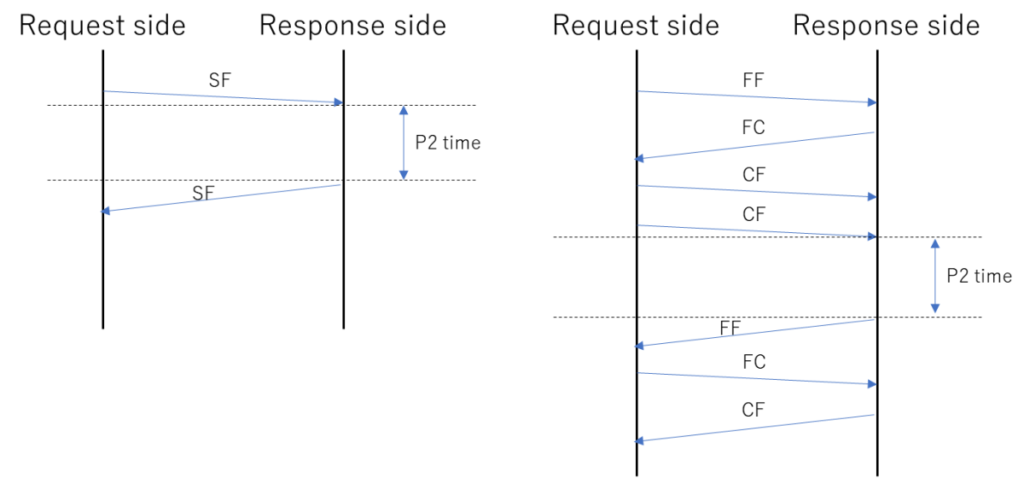Click here for back issues.
https://www.simulationroom999.com/blog/diagnostic-communication-en-back-issue/
Introduction.
Explain ISO 14229 (UDS). series.
In this article, the session layer timeout parameters will be explained with the help of a figure.
Explanation of P2 time with figure
P2 time is explained in the following figure.

As you can see, it’s “the timeout period between transmitting a request message and receiving a response message.”
The “end of the message” may not have come to mind, but it corresponds to the SF or the last CF of the request message.
The “beginning of the next message” is the SF or FF of the response message.
In this connection, there is also P2*time, a derived parameter of P2 time.
This will be explained later.
Explanation of S3 time with figures
Here is an explanation of S3 time.
There is a concept of a session, and after S3 time, it is forced to return to the default session.
The figure below is a representation of this.

You will see that it is a timeout outside of the request and response messages.
After returning the response message, the request message must be sent within the S3 time.
You may wonder why this is the case.
To understand this, you need to understand the concept of a session.
For example, suppose there is some feature that forces a vehicle to perform a debugging operation.
We don’t want to use it under normal circumstances because it is specialized and can be abused.
Therefore, we would make it available only during a specific session with special communication.
However, we don’t want that feature to be enabled all the time.
It would be nice if the person who enabled it could turn it back on, but human error is common.
If that is the case, it would be good if the debugging operation could be forcibly disabled if there is no communication for a certain period of time.
This is the reason why the S3 time was established as a background story.
You may not know what a forced debugging operation is, but you should be able to recognize that if a special mode is automatically deactivated, no strange accidents will occur.
About Sessions
I was going to explain about sessions with figures here, but this is a specification that is not easy to understand.
Perhaps explaining it with figures will not get the point across.
To begin with, The following questions may arise when we are told that “Session Control Service changes the services supported by switching sessions.”
- What is session control service?
- What is the service to be supported?
In other words, you need to know the application layer specified in ISO 14229-1.
This is quite voluminous, so I would like to put it off for later.
Conclusion.
- P2 time is explained with figures.
- P2* timeout will be explained later.
- S3 time is explained with figures.
- S3 time is explained in detail.
- It is difficult if you don’t know the various services.
Click here for back issues.
![[DoCAN] Vehicle Diagnostic Communication Part 41 [UDS 2]](https://www.simulationroom999.com/blog/wp-content/uploads/2022/12/01_eyecatch-3.png)



コメント